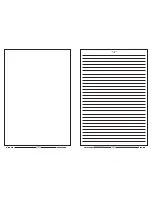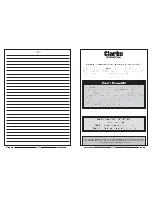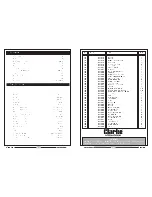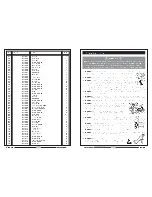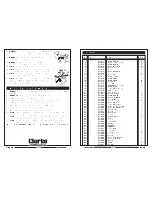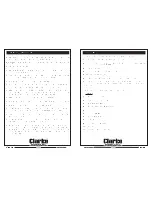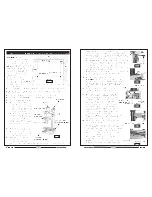
-12-
-7-
Electrical Circuit Diagram 230v 50Hz
Maintenance
(Figures in brackets refer to parts diag page 11)
The amount of maintenance depends on the amount of use the machine gets, however
it is important to carry out routine maintenance to prevent premature wear and shortening
the life of the machine.
1. Inspect and clean all non painted surfaces, lubricate using a light machine oil, Do
Not over lubricate, oil can be applied to the worktable and column etc, using a soft
oil soaked cloth.
2. Inspect and clean all moving parts, Lubricate using machine oil, check for smooth
operation.
3. Inspect the machine for signs of wear or damage, any faults should be rectified
before continuing.
4. Occasionally remove and inspect the motor brushes for even wear etc. Brushes should
wear evenly and not show signs of burning or grooves etc. Consider replacing both
brushes when one brush is 50% worn, (new brush = 15mm in length).
5. Check all supporting bolts etc are tight.
With use, play may develop between the following components.
a. Column (102) - Spindle Box (24).
b. Base (74) - Saddle (114).
c. Saddle (114) - Worktable (105).
Any play can be removed by adjusting the offending part i.e., if excessive play is found
between the base and saddle, proceed as follows;
Tools required = 7mm spanner and small flat bladed screwdriver and 3mm allen key.
1. Loosen locking screw (71), using 3mm allen key.
2. Loosen 4 locknuts (73), using 8mm spanner.
3. Using flat bladed screwdriver back off all four adjusting screws (72), approximately
one full turn.
4. The saddle can now be removed from the base to enable cleaning of the friction
surfaces before adjustment, to do this, turn the crossfeed handwheel anticlockwise
until the saddle comes off the end of the leadscrew. Carefully slide the saddle assembly
off the base, taking care not to drop it.
5. Clean all friction surfaces of all oil and dirt etc using a commercial degreaser and soft
cloth, observing the manufacturers recommendations at all times.
6. Lightly lubricate all friction surfaces and reassemble in reverse order.
7. Position the saddle in the centre of the base.
8. Turn the crossfeed handwheel backwards and forwards, at the same time using small
flat bladed screwdriver, gently, starting on one of the centre adjusting screws, tighten
until resistance is felt on the handwheel, turn adjusting screw back one ¼ turn,
handwheel should move freely again, holding the screw with screwdriver, gently nip
the locknut.
Repeat procedure for the other centre screw, when finished re-check adjustment for
previously adjusted screw, if any further adjustment of that screw is required, it will be
necessary to re-check the second adjusting screw again. Once both centre adjusting
screws are OK and the locknuts are secured, the same procedure can the be applied
to the end screws in turn. When finished adjusting, check the full travel of the saddle
ensuring there is no play, if any play is found, then further adjustment must be carried
out until handle turns freely with no play between the saddle and base.
The above procedure applies to all three moving assemblies equally, other than
perhaps a different size spanner may be required.
Summary of Contents for Metalworker CMD10
Page 2: ... 1 18 NOTES ...


